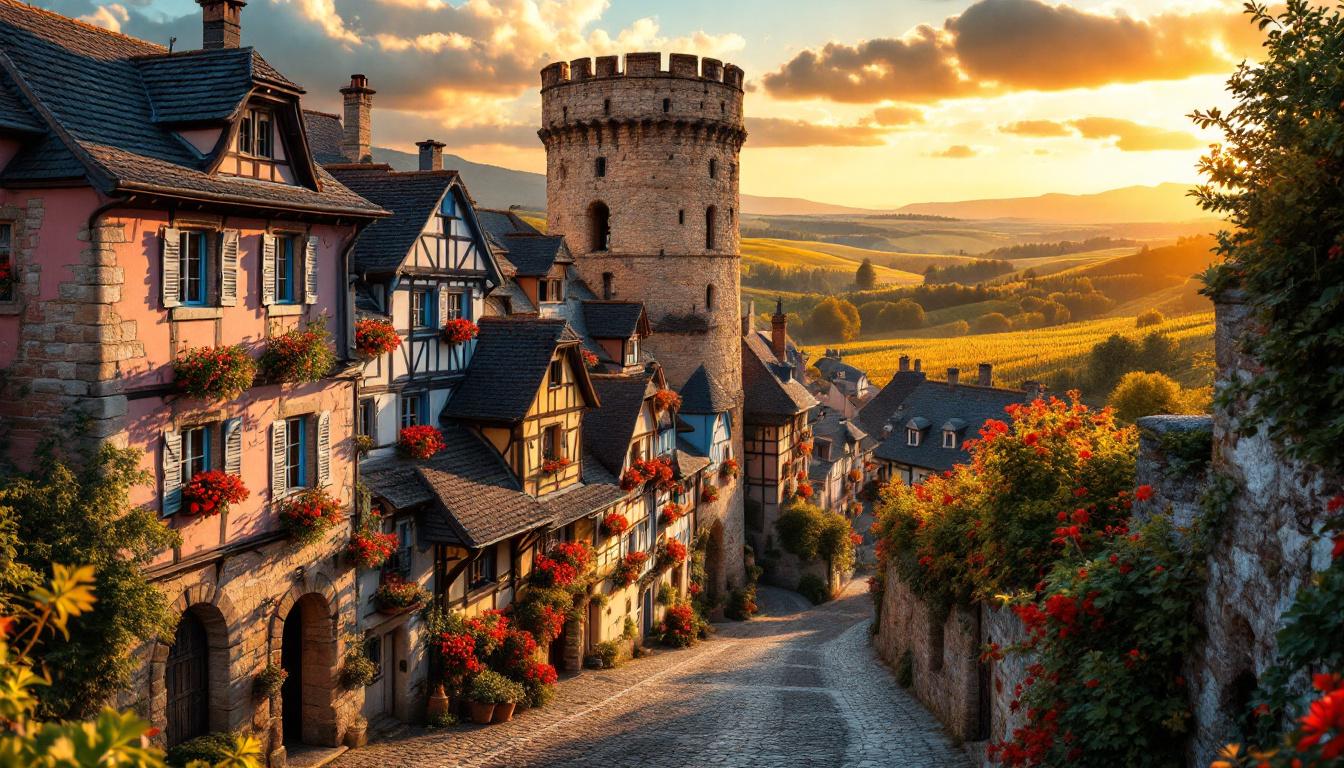In the heart of Alsace wine country, a medieval fortress town stands virtually untouched by time and tourism. Bergheim, with its complete 14th-century double defensive walls and nine watchtowers, remains one of France’s best-preserved medieval villages that somehow still flies under the radar of most travelers.
A fortress frozen in time
Unlike its more famous neighbors on the Alsace Wine Route, Bergheim offers something increasingly rare: authenticity without crowds. The imposing High Tower (Porte Haute) welcomes visitors through the same stone archway that has guarded the town for over 600 years.
“Our walls tell stories that span centuries,” explains Marc Dufour, local historian. “While most medieval towns lost their fortifications to expansion or war, Bergheim’s survive almost completely intact—it’s like walking through a living history book.”
The colorful soul of Alsace
Wandering Bergheim’s cobblestone streets reveals a kaleidoscope of half-timbered houses painted in pastel blues, pinks, and yellows. These aren’t museum pieces—they’re homes where families have lived for generations, adorned with window boxes overflowing with geraniums.
The village’s main square, Place d’Arme, buzzes with local life, especially during weekly markets when residents gather around 16th-century stone fountains that still function as they did centuries ago.
Wine traditions dating back 1,200 years
Bergheim sits proudly along the legendary Alsace Wine Route, with prestigious vineyards that produce some of France’s finest Gewurztraminer and Riesling. The terraced hillsides surrounding the village have been cultivated since Roman times.
At Domaine Marcel Deiss, seventh-generation winemaker Jean-Michel Deiss practices biodynamic winemaking that respects ancient traditions. “Our soil speaks through our wines,” he explains. “The minerality you taste comes from vines growing in the same earth where medieval villagers once walked.”
A dark history of witchcraft trials
Perhaps Bergheim’s most unusual attraction is La Maison des Sorcières (Witches’ House), a small museum documenting the town’s tragic witch-hunting history. During the 16th century, Bergheim had one of the highest rates of witch trials in Alsace.
The museum’s collection of trial documents and torture instruments offers a sobering glimpse into a period when superstition governed daily life—a fascinating contrast to the picture-perfect village we see today.
The perfect base for exploring Alsace
Positioned just 14 kilometers from Colmar, Bergheim makes an ideal launching point for exploring other gems of the region. Nearby Ribeauville (3km), Hunawihr (5km), and the famous Château du Haut-Koenigsbourg (5km) are all within easy reach.
Yet many visitors find themselves lingering in Bergheim longer than planned, seduced by its peaceful atmosphere and authentic charm that bigger tourist destinations have lost.
Where to stay and eat
For an authentic experience, book a room at La Cour du Bailli, a family-run hotel housed in a 16th-century building with a magnificent courtyard. Their restaurant serves traditional Alsatian specialties like choucroute (sauerkraut with sausages) and tarte flambée, paired with local wines.
For those seeking spectacular views, several wineries offer tasting rooms overlooking the village’s medieval silhouette against rolling vineyards.
When to visit this hidden treasure
While summer brings perfect weather for vineyard hiking, autumn transforms Bergheim into a photographer’s paradise as vine-covered hillsides explode with gold and crimson. Winter offers magical Christmas markets without the overwhelming crowds found in larger towns.
Spring brings wildflowers to the Grasberg hill, part of the protected Natura 2000 network, where rare orchids bloom alongside medieval defensive walls.
A village that time forgot
In an age where authentic travel experiences grow increasingly rare, Bergheim offers a precious glimpse into Alsace’s medieval past without the commercial trappings that plague more famous destinations. Like many hidden treasures across France, it rewards travelers willing to venture beyond the obvious.
As twilight descends and visitors from nearby towns depart, Bergheim reveals its most magical aspect—silence broken only by church bells that have marked time for centuries, calling residents home just as they did in 1312 when the first stones of its mighty walls were laid.
